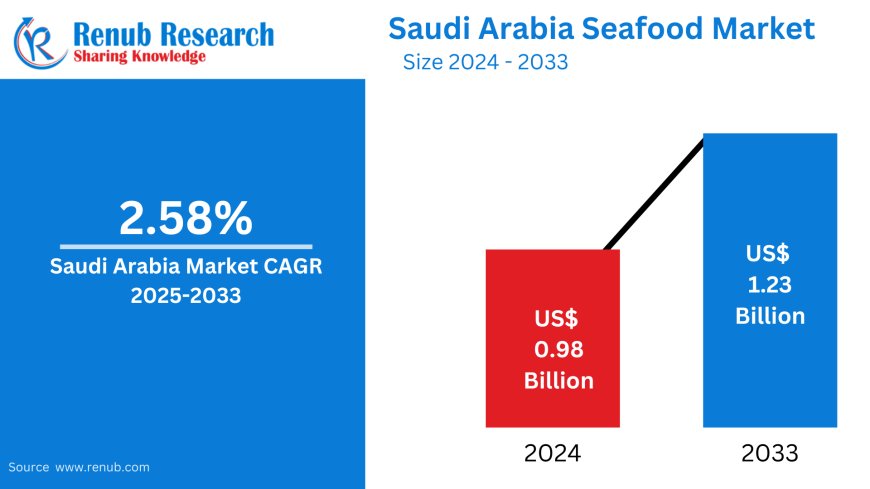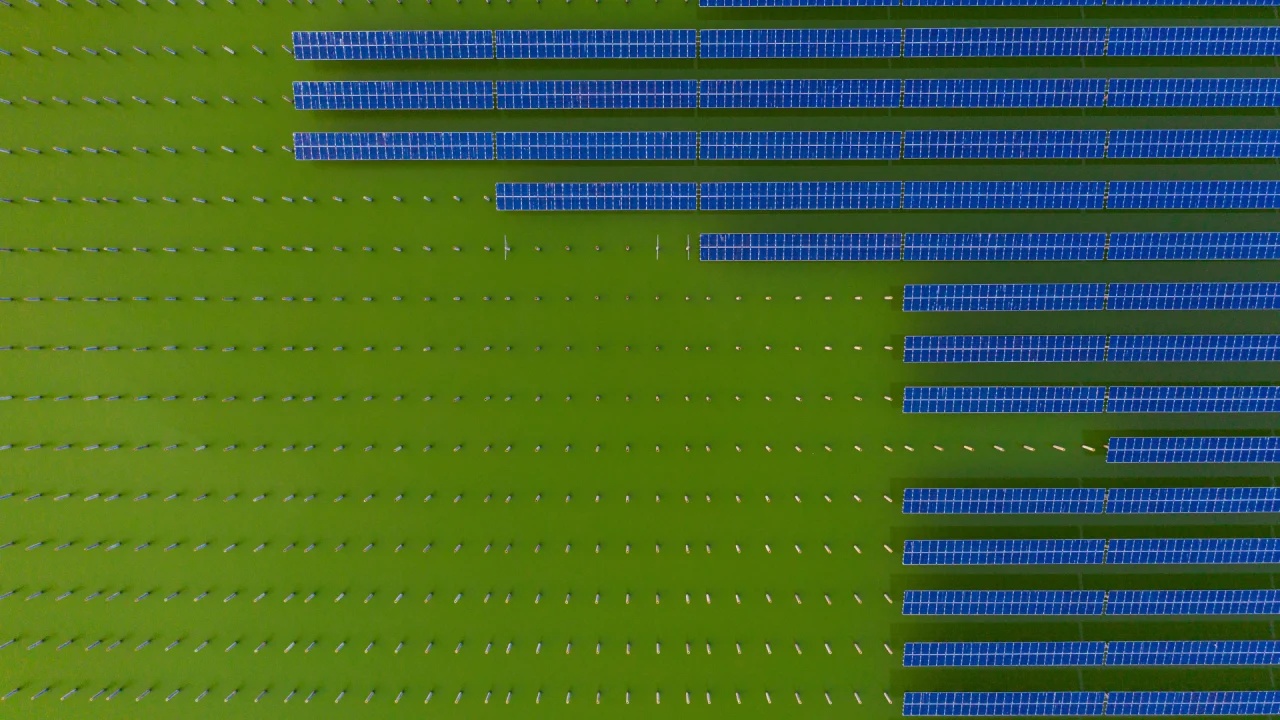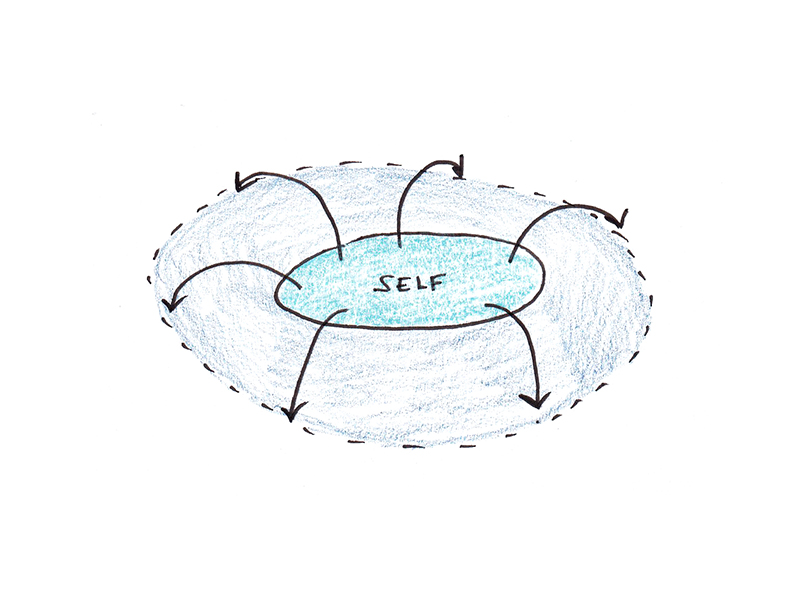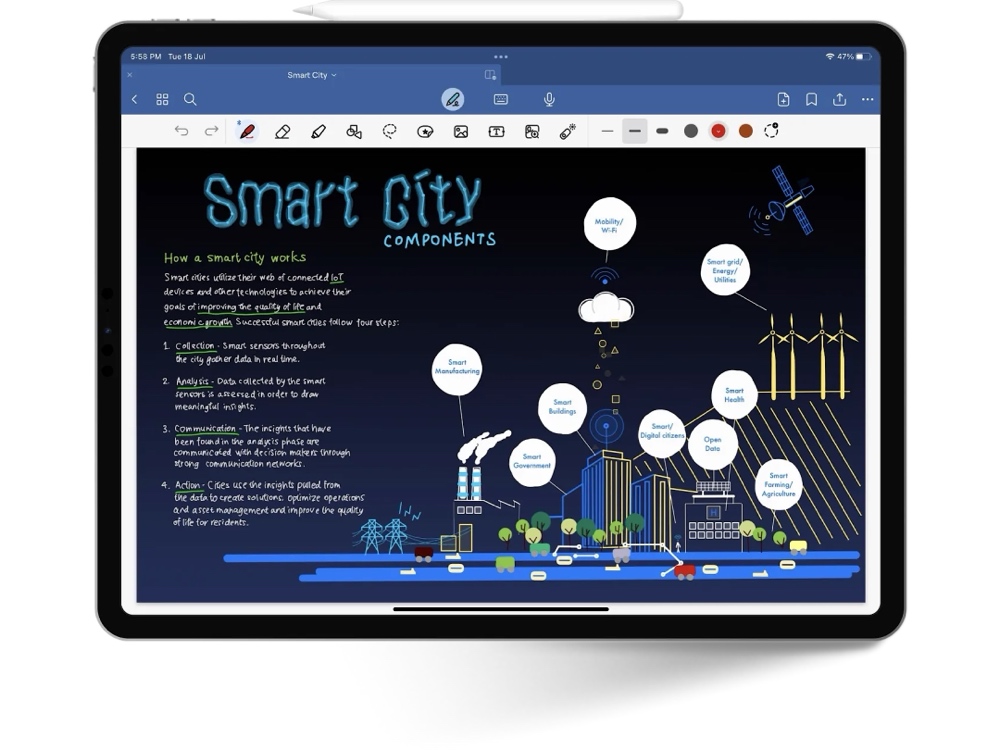Saudi Arabia Seafood Market Insights 2025-2033| Growth & Opportunity Analysis

Press Release: Saudi Arabia Seafood Market Size and Share Analysis - Growth Trends and Forecast Report 2025-2033
Introduction
The Saudi Arabia seafood market is poised for significant growth, projected to reach US$ 1.23 billion by 2033, up from US$ 0.98 billion in 2024, reflecting a CAGR of 2.58% from 2025 to 2033. This expansion is driven by a variety of factors including growing health consciousness among consumers, government incentives to boost seafood consumption, the advancement of aquaculture technologies, and increased domestic production capabilities. As part of its Vision 2030 plan, Saudi Arabia is investing in sustainable seafood practices and infrastructure to position itself as a major player in the global seafood market.
Market Overview
Saudi Arabia’s seafood industry is rapidly growing due to rising consumer demand for healthy protein alternatives, supported by government initiatives and advancements in aquaculture. The country’s seafood consumption has risen, driven by the increasing awareness of the health benefits of seafood, such as high omega-3 fatty acids, vitamins, and minerals. Additionally, Saudi Arabia is focusing on sustainable fishing practices to meet both domestic demand and export requirements.
The Kingdom’s push to diversify away from oil dependency, as outlined in Vision 2030, includes major investments in the local seafood industry. This strategic emphasis has significantly boosted the production capacity of seafood, with a goal to reach 600,000 tons of aquaculture production by 2030, up from 399.5 million metric tons produced in 2022. Notably, shrimp farming has gained momentum, with Saudi Arabia securing a spot among the top 15 nations globally with ASC certification in 2022.
Growth Drivers
Government Initiatives and Vision 2030
The Saudi Arabian government is playing a pivotal role in the growth of the seafood market through initiatives aligned with the country’s Vision 2030 objectives. With a focus on economic diversification, the government is investing in aquaculture technologies and creating a conducive environment for sustainable fishing practices. Capital investments, subsidies, and incentives aimed at enhancing domestic production are instrumental in the expansion of the seafood sector.
A key initiative is the National Fisheries Development Program (NFDP), which aims to draw USD 4 billion in investments to support the growth of aquaculture. The Ministry of Environment, Water, and Agriculture (MEWA) has set a target to increase aquaculture production to 600,000 tons by 2030. This significant effort will position Saudi Arabia as a global leader in sustainable seafood production.
Technological Innovations in Aquaculture
Technological advancements in aquaculture are a key factor propelling the growth of Saudi Arabia’s seafood industry. The implementation of Recirculating Aquaculture Systems (RAS), automated feeding systems, and genetic enhancement of species have led to more efficient and sustainable seafood production. Moreover, improved cold chain logistics and processing technologies have enhanced the quality and shelf-life of seafood products, contributing to market expansion.
Health and Nutritional Awareness
As consumers become more health-conscious, the demand for nutritious seafood products is on the rise. Seafood is viewed as a healthy source of protein and omega-3 fatty acids, essential for heart health and overall well-being. The rising awareness about the health benefits of seafood, coupled with campaigns by health organizations like the Saudi Food and Drug Authority (SFDA), has driven consumers toward healthier dietary choices, further accelerating the growth of the seafood market.
Challenges
Overfishing and Sustainability Concerns
Despite regulatory efforts, overfishing remains a major issue in Saudi Arabia’s seafood industry. Overfishing depletes marine resources, endangering fish populations and destabilizing the ecosystem. To mitigate this, the government has enacted strict laws to promote sustainable fishing practices, including quotas and the establishment of marine protected areas. However, the challenge remains in balancing the economic benefits of the seafood industry with environmental preservation.
Dependence on Imports
While the government is investing heavily in boosting domestic seafood production, Saudi Arabia remains heavily reliant on imports to meet the increasing demand. This dependence exposes the market to risks such as supply chain disruptions, price fluctuations, and geopolitical tensions. Over time, local production is expected to reduce this reliance, but this will take years of sustained effort and infrastructure development.
Market Segmentation
The Saudi Arabia seafood market can be segmented based on product type, form, distribution channel, and region:
By Type
- Fish
- Shrimp
- Crab
- Lobster
- Others
By Form
- Canned
- Fresh/Chilled
- Frozen
- Processed
By Distribution Channel
- Supermarket/Hypermarket
- Department Stores
- Specialized Stores
- Institution Sales
- Food Service
- Online
- Others
By Region
- Western Region
- Northern & Central Region
- Eastern Region
- Southern Region
Regional Market Insights
Eastern Region
The Eastern Region of Saudi Arabia is the country’s seafood hub, thanks to its long coastline along the Arabian Gulf. This region is rich in marine resources and benefits from proximity to major ports, which facilitate both domestic and international seafood trade. The demand for fresh seafood is high, driven by local consumption patterns and a growing appetite for sustainable fishing practices.
Western Region
The Western Region, particularly cities like Jeddah and Mecca, is another important area for seafood production and consumption. The region’s coastal access to the Red Sea supports a wide range of seafood products, from fish to shellfish. The tourism sector also drives demand for high-quality seafood in the region, with both locals and international tourists enjoying regional delicacies.
New Publish Reports:
· GCC Foodservice Market Size and Share Analysis - Growth Trends and Forecast Report 2025-2033
· GCC Hydroponics Market Size and Share Analysis - Growth Trends and Forecast Report 2025-2033
· GCC Smart Home Market Size and Share Analysis - Growth Trends and Forecast Report 2025-2033
Key Players Analysis
The key players in the Saudi Arabia seafood market include:
- Almunajem Foods
- Arab Fisheries Co.
- IZAFCO Fish Packing Company
- National Aquaculture Group
- Saudi Fisheries Company
- Shell Fisheries Company W.L.L.
- Tabuk Fisheries Co.
- The Savola Group
These companies play a significant role in shaping the industry by contributing to production, innovation, and sustainability efforts.
Conclusion
The Saudi Arabia seafood market is poised for significant growth, driven by consumer health trends, government support, and technological advancements in aquaculture. The country's strategic focus on increasing domestic production and sustainable practices positions it to become a global seafood powerhouse by 2033. However, challenges such as overfishing and dependency on imports must be addressed to ensure long-term growth and sustainability.
As Saudi Arabia continues to invest in its seafood sector, both the domestic and global markets will benefit from the rising availability of high-quality, sustainable seafood products. The industry’s trajectory will be shaped by the successful execution of Vision 2030 and the continued development of aquaculture technologies and sustainable fishing practices.
About the Company:
Renub Research is a Market Research and Consulting Company. We have more than 15 years of experience especially in international Business-to-Business Researches, Surveys and Consulting. We provide a wide range of business research solutions that helps companies in making better business decisions. We partner with clients in all sectors and regions to identify their highest-value opportunities, address their most critical challenges, and transform their businesses. Our wide clientele comprises major players in Healthcare, Travel and Tourism, Food Beverages, Power Energy, Information Technology, Telecom Internet, Chemical, Logistics Automotive, Consumer Goods Retail, Building, and Construction, Agriculture. Our core team is comprised of experienced people holding graduate, postgraduate, and Ph.D. degrees in Finance, Marketing, Human Resource, Bio-Technology, Medicine, Information Technology, Environmental Science, and many more.
Media Contact:
Company Name: Renub Research
Contact Person: Rajat Gupta, Marketing Manager
Phone No: +91-120-421-9822 (IND) | +1-478-202-3244 (USA)
Email: mailto:rajat@renub.com









































































































![Building A Digital PR Strategy: 10 Essential Steps for Beginners [With Examples]](https://buzzsumo.com/wp-content/uploads/2023/09/Building-A-Digital-PR-Strategy-10-Essential-Steps-for-Beginners-With-Examples-bblog-masthead.jpg)





























![Senior Support Engineer - US West [IC3] at Sourcegraph](
https://nodesk.co/remote-companies/assets/logos/sourcegraph.f91af2c37bfa65f4a3a16b8d500367636e2a0fa3f05dcdeb13bf95cf6de09046.png
)

















